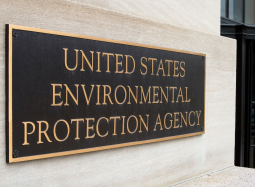 |
EPA Tackles Climate Change Head On
The OAR’s laundry list of climate change vulnerabilities is the baseline for the anticipated ways the office will continue to regulate air emissions and improve air quality. Although there remain many, many unknowns and research is ongoing, OAR’s Climate Change Adaptation and Implementation Plan offers the regulated community a broad overview of what associated adaptations are under consideration and why.
One of the most important vulnerabilities is that of troposphereic ozone, which is anticipated to increase even as emissions levels are expected to decrease over the next decade. While OAR concedes there are still uncertainties related to the timing and locations of this impact, the bottom line is that surface-level ozone will increase, primarily due to changing weather conditions. To manage ozone, OAR will continue to perfect regional monitoring and assessment, but also notes that, in the future, achieving and maintaining National Ambient Air Quality Standards (NAAQSs) may require additional actions such as more pollution control measures at both the state and national levels to comply with provisions of the Clean Air Act (CAA).
Join us for an in-depth webinar on January 7, 2014. Our presenter, a seasoned environmental professional who has helped many companies assess EPA activities and initiatives, will help you get a clearer sense of what will unfold in 2014.
Another climate change phenomenon is that of increased air-borne particulate matter (PM) resulting from wildfires. Again, there are many, many factors involved in determining and assessing this threat, but the reality is that wildfires are already increasing in number and severity and the subsequent PM emissions “have the potential to significantly impact future aerosol air quality.” Since wildfires are not planned nor permitted emission sources, OAR plans to utilize the NAAQS and implementing programs to meet and maintain PM levels, which could mean additional industry controls in areas affected by more frequent wildfires.
The OAR also considers indoor air quality a growing concern as severe weather events and climbing temperatures keep people indoors. Among the many aspects involved are deterioration of building envelopes leading to more moisture and mold, insect and animal pests, as well as over use of weatherization that decreases ventilation. The OAR Plan maintains that EPA may need to revise current indoor air protocols for schools and single-family homes and also increase training for building owners and managers through partnerships with other Federal agencies. OAR also proposes to develop ways to track and assess the effectiveness of weatherization and other remodeling activities that may impact indoor air quality.
One indoor air problem receiving special attention is that of radon exposure that can increase when ventilation decreases or changes in building pressurization occur. OAR also notes that prolonged severe weather could result in more people living and/or working below-ground where radon exposure is normally higher. Again, OAR recommends EPA update current voluntary guidance, work more closely with other agencies, and continue to promote building and remodeling “with or near materials that have low radon content.”
Learn the key activities the EPA undertook in 2013, with particular emphasis on those that will have an impact in 2014, and much more during our in-depth webinar on January 7, 2014.
Register Now
EPA’s stratospheric ozone program could also require considerable changes that may impact regulated industries. Among the considerations are the EPA’s need to address regional disparities when implementing ozone depleting substances (ODS) program priorities, due to climatic changes that impact the many different types of ODSs. The increased need for cooling as temperatures rise could also cause EPA to rethink programs related to ODSs used to manufacture and operate cooling devices and materials, including imports of ODSs, and reconsideration of how the agency prioritizes and assesses the suitability of ODS substitutes in light of climate change impacts on air quality.
Regarding deposition of sulfur, nitrogen and mercury from air emissions and the significant changes that may occur as a result of climate change, OAR notes that consequences on ecosystems may require additional protection under EPA’s current emissions reduction programs.
As stated yesterday, the OAR Plan is just one of 17 Climate Change Adaptation and Implementation Plans released for public comment in November. The other EPA Office and Regional Plans and the Draft Climate Change Adaption Plan released in February 2013 are available for review at http://www.epa.gov/climatechange/impacts-adaptation/fed-programs.html.
